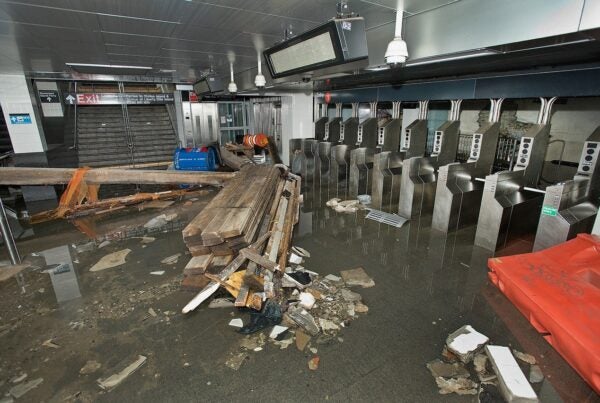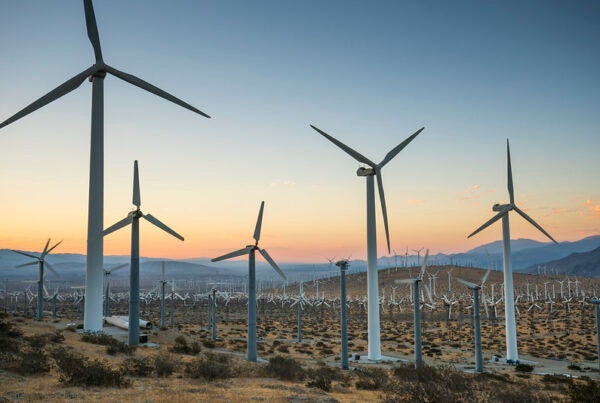Organizations Involved: Institute for Policy Integrity
Abstract
Many analysts project that large-scale, widespread carbon dioxide removal (CDR) will be necessary to reach net-zero greenhouse gas emissions, and thereby stop exacerbating climate change before United Nations temperature limits are exceeded this century. However, concerns about costs, technological constraints, safety, environmental justice impacts, moral hazard, and other issues contribute to tremendous uncertainty about the future of CDR. Expert elicitation—the process of formally eliciting the views of relevant subject matter experts to gain insight on complex or uncertain topics—can theoretically help clarify consensus on CDR-related issues.
The Institute for Policy Integrity conducted an expert elicitation on issues related to CDR, surveying an interdisciplinary group of 699 researchers who had published at least one article on CDR in a leading academic journal. To the Institute for Policy Integrity’s knowledge, this is the largest-ever survey of expert views on negative emissions. The Institute for Policy Integrity’s questions focused on topics including the projected cost and scale of various CDR approaches; key barriers and risks; and desirable policy options.
The Institute for Policy Integrity’s survey yielded forecasts and nuance that can complement data from the existing CDR literature. Some major findings are highlighted below.
- The survey’s respondents predict that a long, diverse list of barriers will likely inhibit widespread CDR. They identify market costs and insufficient demand for CDR (due to government policy gaps) as particularly significant challenges.
- A number of policies could help pave the way for efficient, safe CDR. Respondents place particular emphasis on (direct or indirect) carbon pricing/demand-pull policies and R&D support. A combination of policies will likely be needed to overcome barriers.
- Despite numerous barriers and a dearth of current large-scale projects, respondents predict multi-gigaton-scale CDR to occur by 2050, with major additional growth through 2100. These findings are more conservative than the CDR ranges determined to be technically feasible in the literature, but respondents predict a median of 2.3 Gt of CDR in 2050, 5 Gt in 2075, and 10 Gt in 2100. Mean responses are significantly higher due to a portion of respondents who offer especially bullish projections.
- Respondents predict that Bioenergy Carbon Capture and Storage (BECCS) will provide the largest share of CDR in 2075 (just over 20% of total removal), followed closely by forest-based CDR. They estimate that Direct Air Capture (DAC) will provide 15-20%, suggesting that they do not expect technological and cost concerns to limit DAC’s ability to develop into a large-scale CDR option. Terrestrial and ocean-based approaches are also projected to play smaller but significant roles in 2075 CDR efforts.
- Once captured, respondents predict a mix of approaches for CO2 storage or utilization in 2075. Underground storage or mineralization represents a plurality (roughly 40% of the total), with natural sinks, enhanced oil recovery, and utilization also projected to play sizable roles.
- Forest-based carbon removal is estimated to be the cheapest of all CDR approaches in 2075, with a mean cost of $49/tonne. Of the technological approaches, BECCS is projected to be significantly cheaper than DAC at a mean cost of $108/tonne compared to $163/tonne. DAC is the only approach with an estimated mean cost that exceeds the estimated mean cost of all CDR approaches in aggregate.
- Respondents’ average cost estimates for all CDR approaches, including DAC, are significantly lower than prominent estimates for the social cost of carbon, suggesting that respondents expect all the CDR approaches discussed in this survey to be cost-benefit justified, at least by 2075. Moreover, the Institute for Policy Integrity calculated respondents’ projected marginal costs for reducing emissions in line with UN climate targets, and these are also lower than the social cost of carbon, suggesting that aggressive emissions reductions are cost-benefit justified.
- Nearly 48% of respondents believe that emissions-mitigation efforts would be significantly greater if widespread CDR does not become viable by 2075. This finding suggests a belief that society has the capacity to expand decarbonization efforts, and that the promise of CDR offsets is either a moral hazard limiting some emissions reductions or a lower-cost pathway that could make some less-desirable mitigation efforts unnecessary.
- The vast majority of respondents predict that enormous levels of CDR will be needed to achieve a 2075 net-zero GHG scenario. More than 85% of respondents believe that more than 12 Gt of CDR will be needed, with some estimating a need for dozens or even 100+ Gt. In a separate question, respondents predict much lower removal amounts in 2075, suggesting that they do not expect society to reach net-zero emissions in 2075.
- Respondents believe that ambitious R&D funding can play a major role in accelerating the deployment timeline for technologies such as CDR. In a scenario where heavy R&D funding is added to an already historically aggressive carbon-pricing (or equivalent) policy, respondents estimate that net-negative global emissions would become feasible significantly earlier—potentially before 2050. They also project that ambitious R&D funding would considerably shrink the uncertainty and range of feasible timeframes for reaching net-zero emissions.
Safely and efficiently scaling up CDR efforts to the levels many researchers deem necessary will be an enormous challenge. The Institute for Policy Integrity’s findings offer information that analysts and policymakers can use to inform expectations and policies related to CDR during this process.




